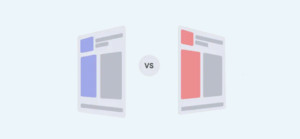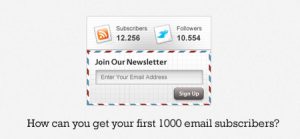Email marketing can be a blessing and a curse - especially when not done correctly. The days of email blasts are gone but not forgotten. Not to mention that open rates could very well be the byproduct of a "Mark all as read" button.
I bet that after this intro, you're wondering why brands use email marketing so much and why it's among the most popular mediums in digital marketing. Here's why:
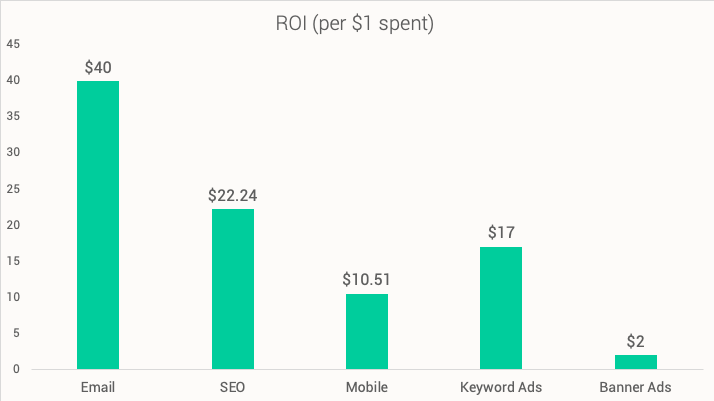
(Source)
So, email marketing, when done correctly, is the perfect medium to promote your marketing message. And open rates can be a fantastic tool to measure your campaign's effectiveness. Provided that your campaign promotes something helpful - be it a newsletter or an offer.
But let's take it from the top.
Email Marketing Campaign: Definition and Tools
To know how to create an email marketing campaign, you'll need to define it and understand the tools you need to create it. Let's get into more detail.
Email Marketing Campaign: A Definition
When discussing an email marketing campaign, we discuss a series of emails. An email marketing campaign aims to nurture, inform, or even sell. It depends on the recipient base and the brand's needs at any given time.
For example, an onboarding email series differs vastly from an abandoned cart or welcome email series. Each of those types of email campaigns will have a CTA that will serve the campaign type's purpose - "Shop now," for example, "Learn More," or "Take me to the website."
Marketers create email marketing campaigns according to the stage of the user's funnel. That way, brands can boost authority and remain top-of-mind, as this would mean that audiences receive personalized marketing messages that resonate with them, according to the funnel stage.
Email Marketing Campaign: The Tools
You may have all the knowledge, but you'll need tools to create an email marketing campaign that will make the title justice and bring you the ROI we talked about in the beginning.
Many popular email marketing and e-commerce marketing automation platforms offer various tools, like ConvertKit and plenty of ConvertKit alternatives, but not every platform is as functional as the next.
The main things to look for are the following:
- A variety of email templates that are fully customizable and responsive. You'll need your email campaign to look great on all screens.
- A Drag-and-Drop editor will help you create your emails from scratch if you want to start something very specific.
- Personalization and segmentation options and custom fields to nail that dynamic content aspect of your email marketing campaigns.
- Marketing automation recipes that can work according to the stage of the funnel your audience is in and can help you create triggered campaigns that feel like a natural continuation of the user's action.
Such tools are essential in a field as competitive as email marketing, where every brand strives to stand out in a full email inbox.
What Are the Basics Behind an Email Marketing Campaign?
Creating an email marketing campaign is not easy, of course. However, it's a way to communicate your marketing message on your own terms without bothering with complex social media algorithms.
Of course, to manage that and not end up in the junk bin, you must consider a couple of things.
First of all, remember that a marketing email doesn't need to be sales to score a sale. You need to understand your customer personas and create content catered to their needs. This is the only way to lead them down the funnel seamlessly.
But to do that, you'll need to create a valid email list first. You need subscribers interested in receiving your marketing message and not users who would subscribe to take advantage of a random offer. That is not to say that a little incentive cannot go a long way. Use logical incentives that make sense to you and your marketing budget.
Also, make sure to use lead-gen tools first. Landing pages, subscription forms, and contests can help boost your lead generation and create an email list that makes sense. Don't forget about flyers; create professional flyers and quickly spread the word about your business.
After that, you must remember that your email subject line is the first thing a user will notice. Use a subject line that will spark curiosity and will have users click on your email. And don't forget your body copy as well. Your content should be semantically appropriate and reflect what your subject line entails.
Another thing you should consider would be understanding how your audience works and why they would like your product over the competitor's. If you don't have sufficient data or you're just starting, you could study the ideal audience's behavior on your competitors' social media. Practice active social listening and segment your audience into demographics.
For example, informing your prospects about an item that would interest them location-wise makes more sense than creating a generic email marketing campaign.
Gathering data and understanding segments is, of course, one thing. Creating an email campaign that portrays your brand's values and what it can do for your users will not do you any favors. The same goes for an email campaign that lacks personalization and is ill-timed.
An email that celebrates the Chinese New Year is quite specific and can look ill-timed to people who don't celebrate it. This is why personalized campaigns are so important.
Customize your email design enough to portray that. Create enough whitespace, use alt-tags, and invest in accessible campaigns that users can read through screen readers and other devices.
Always be clear when conveying your marketing message, and use actionable verbs and a CTA that users will understand and will be the logical thing to do. If your email newsletter campaign is about onboarding a user, a "Shop Now" CTA won't work.
You can also make your emails into a series. Allow your users to pick and choose when they'd like to get updates from you - that way, you'll train them to expect your marketing messages. Like so:
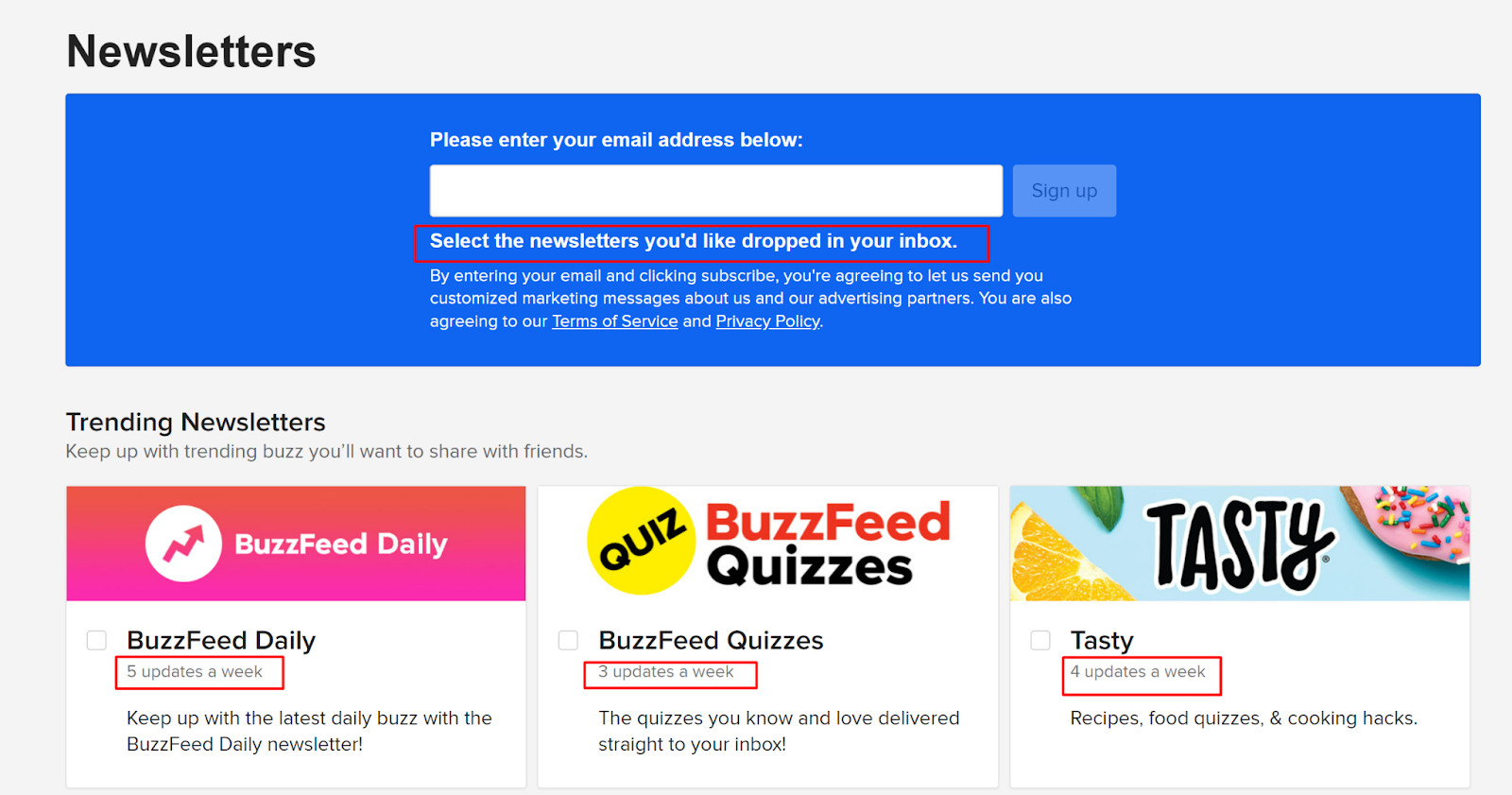
(Source)
Also, don't forget follow-ups, especially if your campaign is time-sensitive. Use features like countdown timers and engaging elements like GIFs to notify them about a specific time frame they should consider.
The Types of Campaigns You Will Need
Experienced marketers will use hyperbole at this stage and tell you that each customer needs a specific email campaign. And while this may not be the case, it is somewhat true.
Since email marketing is a channel that creates dialogues with prospects, you should cater to each need as much as possible. Managing to do so will help you send the right campaign at the right time according to your marketing plan and the message you want to get across.
But what are the essential email marketing campaigns your business needs?
The Welcome Email
A welcome email is highly anticipated; many marketers consider it the most successful campaign.

(Source)
A welcome email is part of a triggered email campaign, meaning users expect it upon signing up. Through a welcome email, you could thank subscribers for taking an interest in your brand.
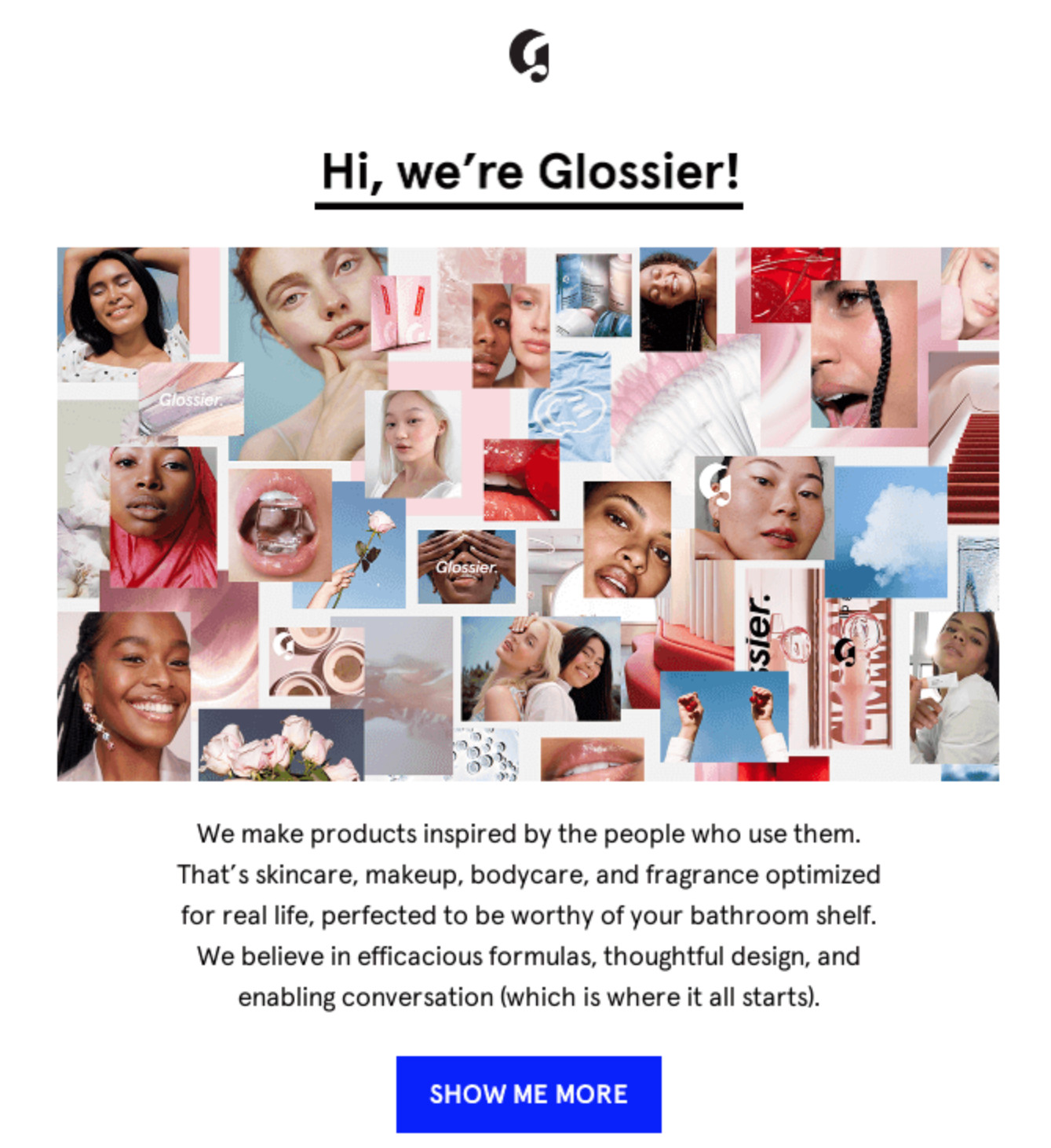
(Source)
This exceptional welcome email has been carefully crafted to embody the essence of the entire brand. From the moment you look at it, the expert design is evident immediately, leaving a lasting impression. The visually appealing collage, thoughtfully incorporated into the email, adds a perfect touch of creativity and intrigue. It is a captivating introduction, seamlessly guiding readers toward the compelling copy introducing Glossier as a brand. The harmonious combination of expert design and compelling content creates a memorable and immersive experience for recipients, setting the stage for a strong brand connection.
Phrases like "to be worthy of" and "inspired by the people" work beautifully with the collage and make a perfect introduction for the brand's conversion from content. When users open this email, they understand that they'll find products existing users will love, along with team favorites and ways to contact the brand itself.

As a result, users get a fantastic first impression from a brand that doesn't lack a human touch. Even more so, the brand's representation through that email is all about its products, solutions, and how users can get expert knowledge through a simple email.
The Thank You/Verify Your Email Address Email
Let's assume that your landing page or pop-up form got you the desired conversion, and now you've got more than a couple of leads to welcome. Are you going to do so without a thank you email that serves as a double opt-in?

(Source)
This is a beautiful example of a thank you email that serves as a double opt-in. It's fun and engaging without distracting users from the actual reason behind it.
For some marketers, double opt-ins might sound a little counterintuitive - why make the users take an extra step when you can engage them right there on the spot? There are two reasons behind this.
- You need to ensure that their email addresses are valid, with no typos, and belong to actual humans. This will help you avoid bad deliverability down the line and will help you maintain a healthy email list.
- Users who are not that interested won't take the extra step. Those users would be fly-bys anyway, and you need engaged leads who can do something for you.
These emails must be engaging and clear enough for your audience to understand their purpose. When asking a user to verify the data they're giving you; you risk users thinking that you might be a shady brand. This is why you need to be clear when stating the purpose of your email.
Also, phrases like "You're a click away" show transparency and confirm what the following action might be.
The Email Newsletter Digest
There is no better formatting for promotion than the simple newsletter. More and more brands use it to create email campaigns that talk about new blog posts and content users would love to see.
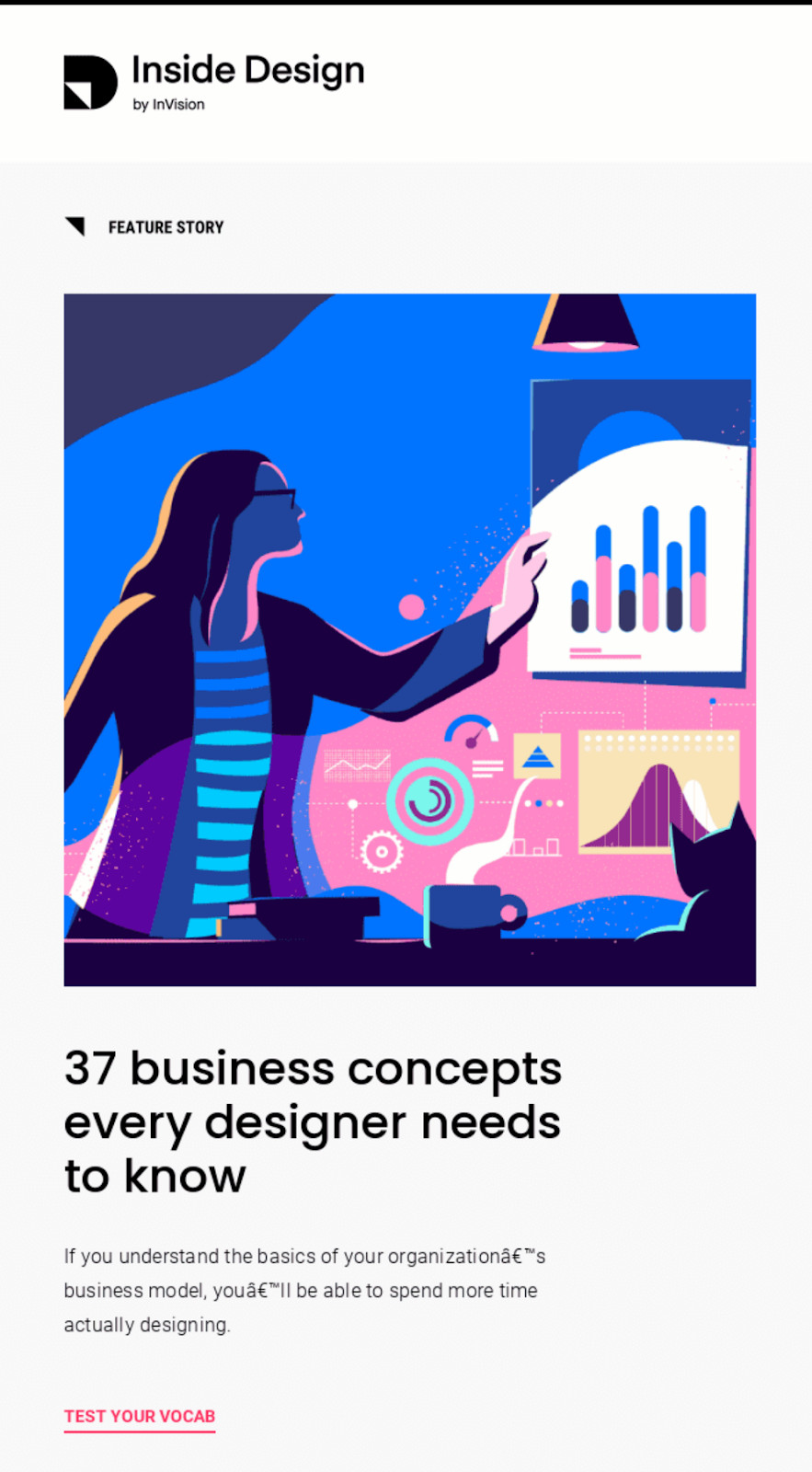
(Source)
This newsletter promotes new blog posts with expert content, beautiful structure, and CTAs that draw attention. It's even more impressive and entertaining, considering those CTAs are semantically linked to the blog post's title - some are a mini-answer to the Headline's question.
This little twist is a perfect addition to any content strategy, and it can boost engagement and the brand's CTR. This idea is entertaining; it tells a little story and sparks a user's curiosity.
The Product Update Email
Product updates are fantastic for letting users know about new features, new products, and more or less any new feature your brand is responsible for.

(Source)
This one is a fantastic example of a seasonal product update. It's perfect for revamping a type of email that could be mildly engaging and not fancy enough for a user to open and, eventually, click through. Canva has managed to do precisely that.
The brand has created a new feature in the form of Valentine's email templates. If you happen to do the same and get all seasonal Halloween email templates for your email marketing campaigns, the product update email is just the thing.
Just remember how to provide value to your audience by creating content that will benefit users. If your updates are just generic and there is nothing to write home about, you could just skip the update or even let only interested segments know.
If, on the other hand, there is no such segment, you could send a dedicated email newsletter once every time interval that makes sense for your brand. That way, your users will be informed without seeing your name in their inbox every now and again.
The Confirmation Email
Imagine placing an order and never receiving confirmation for it. Does it sound normal or more than a little scammy? This is why you need confirmation emails for your audience.
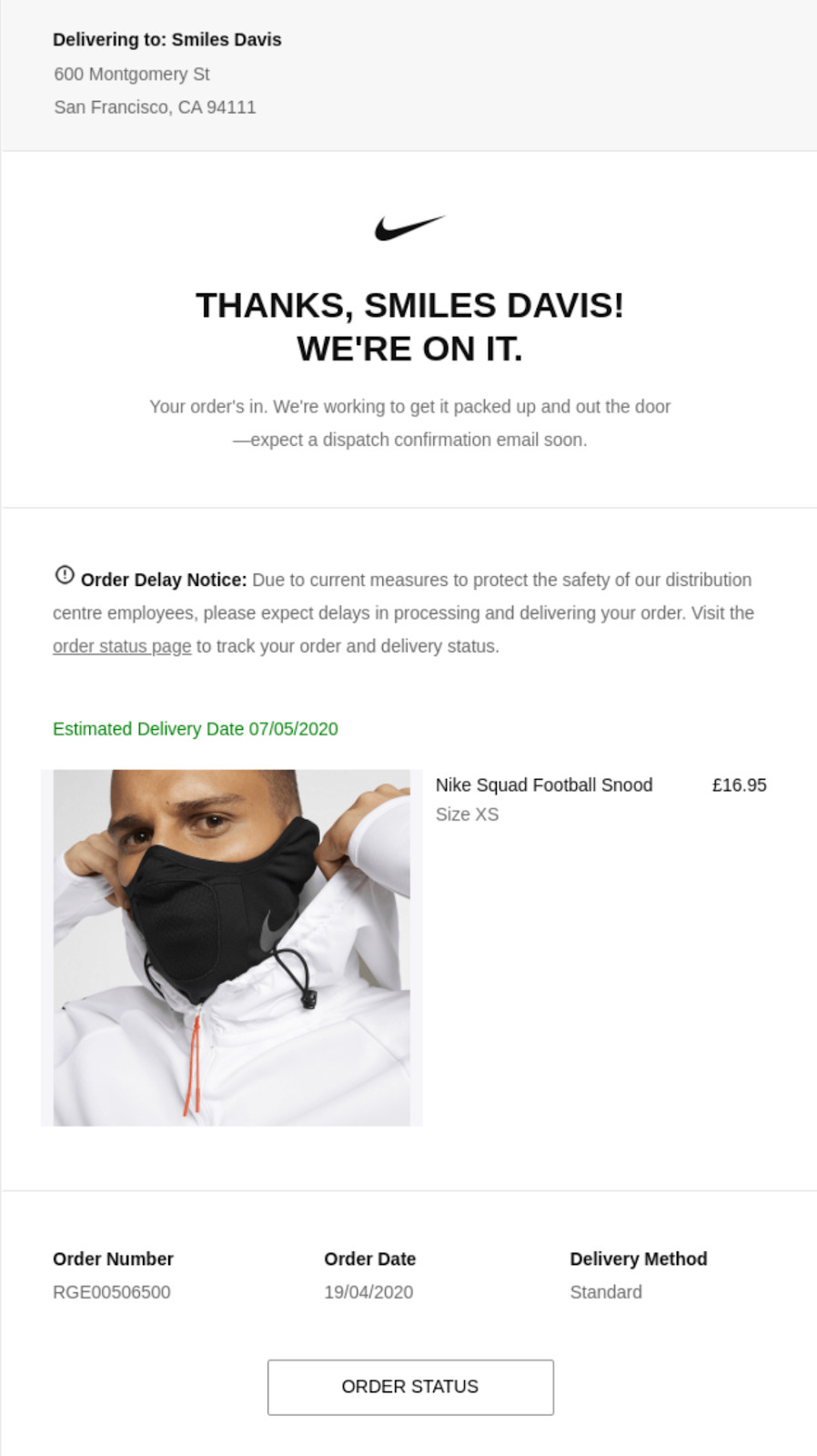
(Source)
Here's all you need from a confirmation email. "Order received" is the perfect subject line - this is not the place to get overly creative. You need users to understand what the next step will be. It's straightforward.
Moreover, it answers all the main questions a user might have regarding their item. "Order received" and "We're on it" are two things that can ease a user's mind. And we all know that credibility is an essential customer service skill, especially in eCommerce.
The Transactional Email
It's what usually comes after the order's confirmation. A transactional email is, again, not the place to demonstrate all of your creativity, as its role is simple.
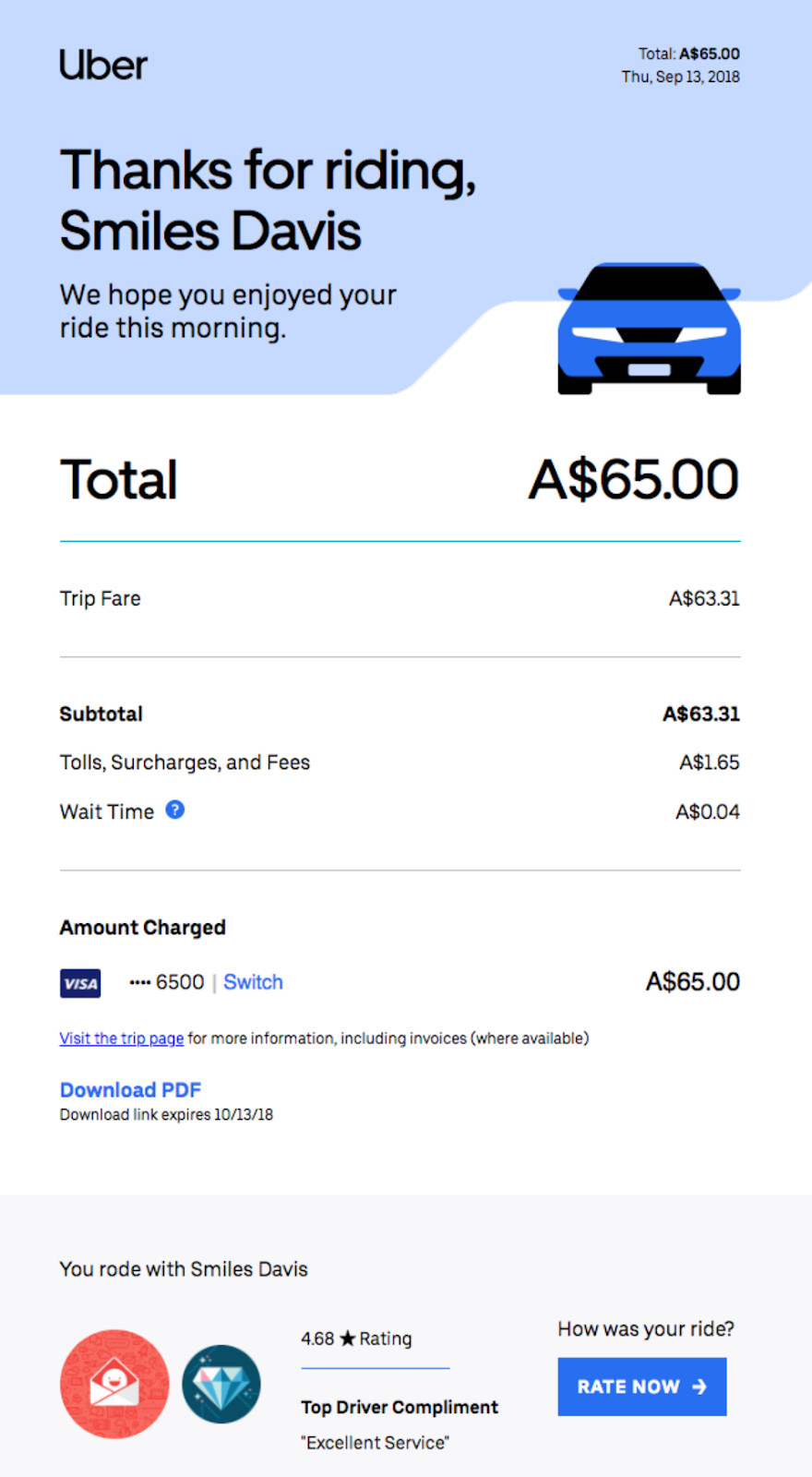
(Source)
This email tells the user that their transaction is valid and completed. It's there to let them know there is nothing more for them but to sit and wait or enjoy their purchase. It is essential because brands need it to create a smooth environment and seamless experience, especially regarding sales or recurring payments. Also, it allows users to understand when and how the payment was authorized - and as we all know, transparency is the most crucial factor in transactions.
In other words, it confirms that the users' steps were right and that the brand itself is legitimate.
The Referral Email
This is one of the most overlooked emails in the niche, but it can bring back a lot of revenue if done correctly. Instead of always targeting new leads, you can ask for referrals from happy customers. Like this:
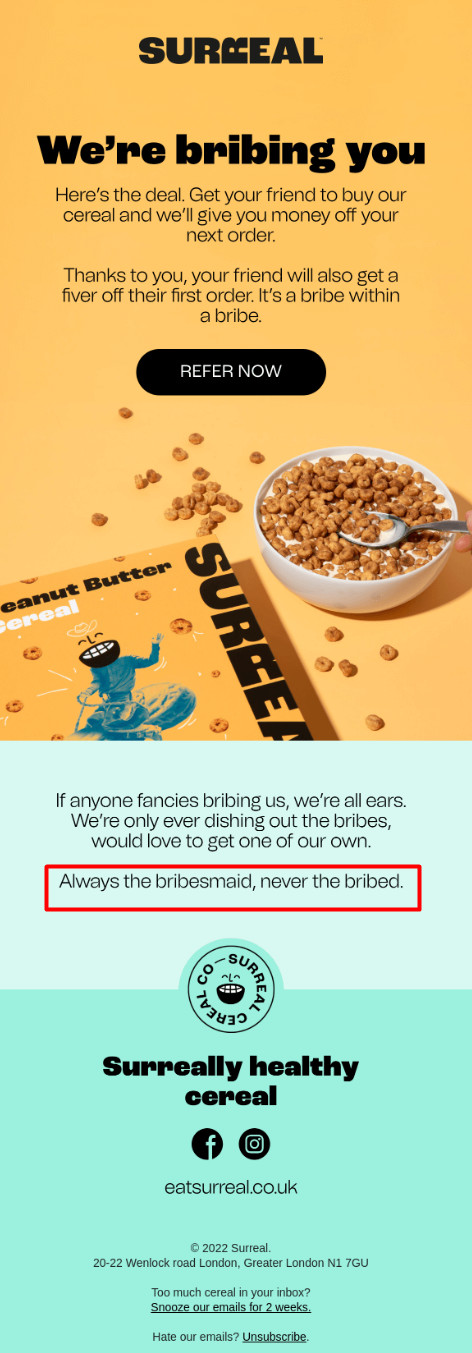
(Source)
This email is from the cereal brand Surreal, and it made me chuckle with its clever copy. They call incentives "bribes"; it's lighthearted and eye-catching, showing the user exactly what they need to do.
The subject line is also quite cheeky but simple and raises curiosity, not to mention that the final sentence of the email is one of the most clever puns I've seen in a while. This one is a winner when it comes to getting more customer referrals, not just in terms of incentives but also in simply getting the job done in a creative and eye-catching way by being lighthearted about it.
The Customer Survey Email
This is one of the emails that can generate as much data as you need to understand whether your services and products are up to the users' expectations or not.
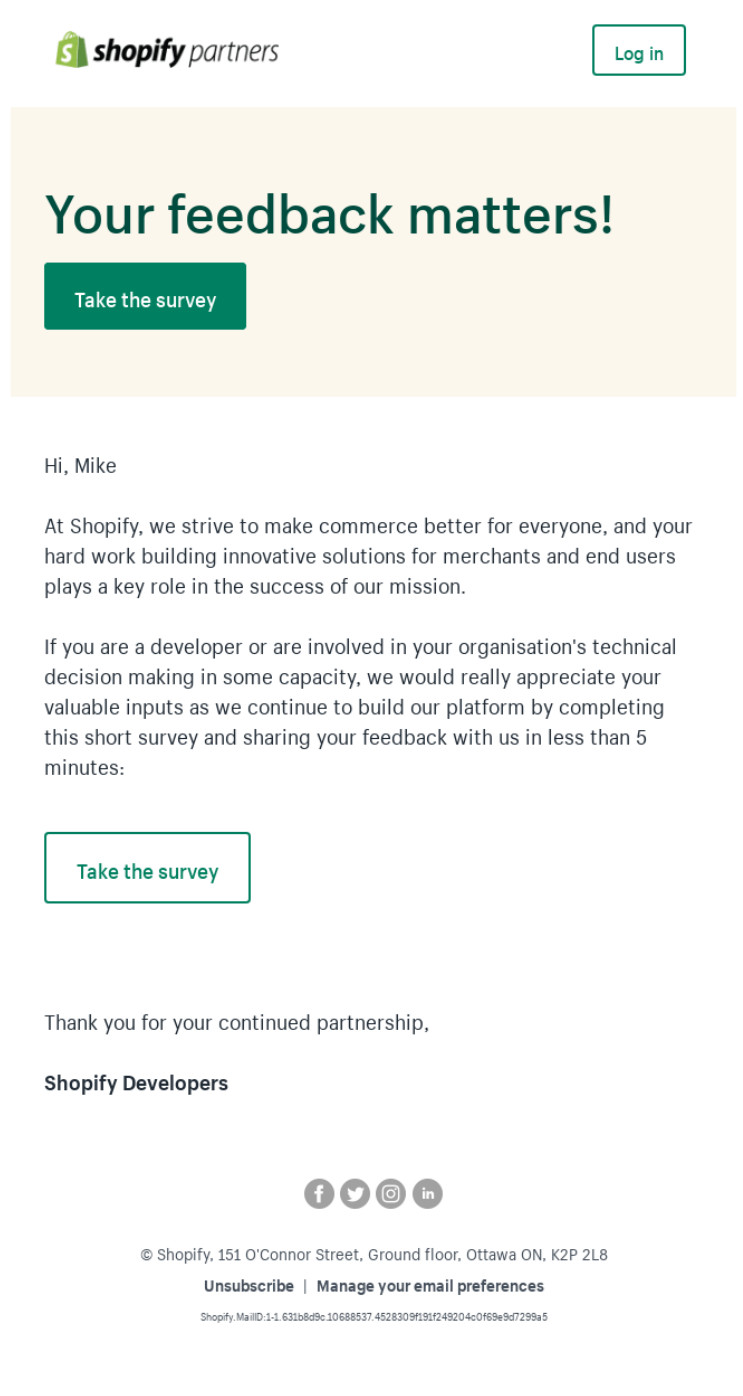
(Source)
The above example is simple and actionable. It shows the next step and the action the user needs to take. In other words, you don't need an email expert to understand the objective here.
Creating a form or a survey to increase customer engagement and understand what they like about your product - or even what they hate - will do you a lot of good in the long run. It will help you expand your authority and create a brand with all the elements your users love.
The Win-Back Email
This is a great campaign to win back customers who haven't opened your email or interacted with your brand. Of course, I'm sure you think there's a reason for that. Sometimes, it's just because they got caught up in something or because one of your competitors did a better job than you.
So, here's what you can do:
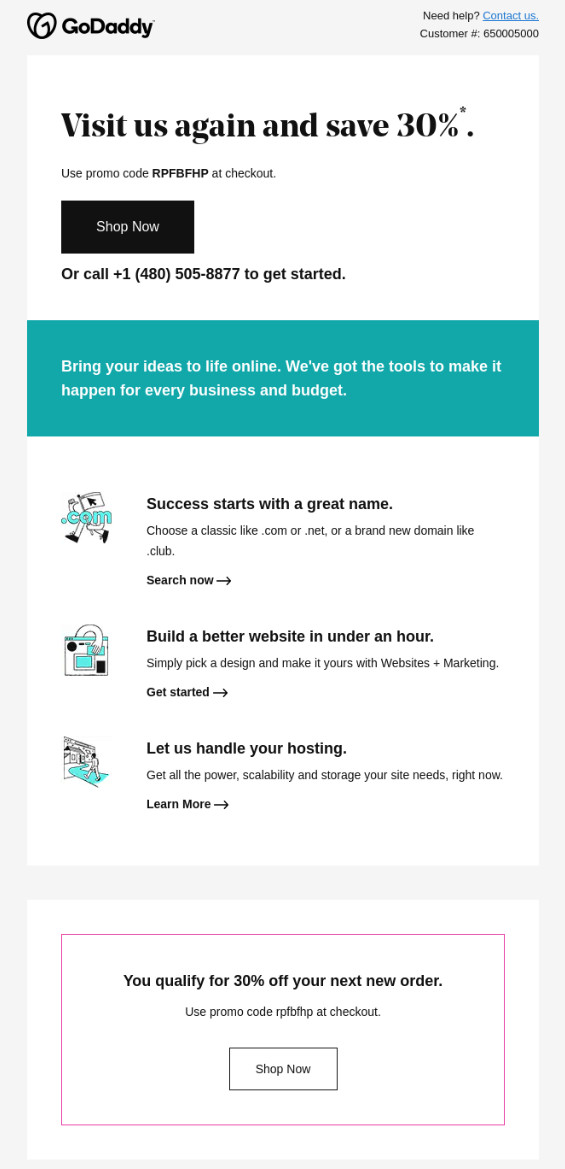
(Source)
"Visit us again" and showing an incentive is a fantastic way to entice the email recipient and make them think of returning and using your product again. Think of it as a PR tool: it allows users to re-engage with your brand and reminds them that you're there. All the while, you're giving a small token of appreciation and will get more revenue back.
The Takeaway
To create truly exceptional email campaigns, leveraging the power of an advanced email marketing and marketing automation platform is crucial. By harnessing the capabilities of such a platform, you can effortlessly collect valuable data on customer behavior and preferences, enabling you to segment your audience effectively. Through A/B testing various elements like subject lines, content, and call-to-action buttons, you can fine-tune your campaigns for maximum impact. Remember, the key lies not only in implementing these strategies but also in diligently analyzing the results. By closely monitoring key metrics such as open rates, click-through rates, and conversions, you can gain valuable insights into what resonates with your audience and continuously optimize your campaigns for success. So, take the leap, invest in a robust platform, experiment with different approaches, and embrace the power of data-driven decision-making to elevate your email campaigns to new heights of effectiveness and engagement.



![Best Data Enrichment Services [2025]](https://ik.imagekit.io/debounce/wp-content/uploads/2021/04/popular-data-enrichment-tools-300x139.png)
